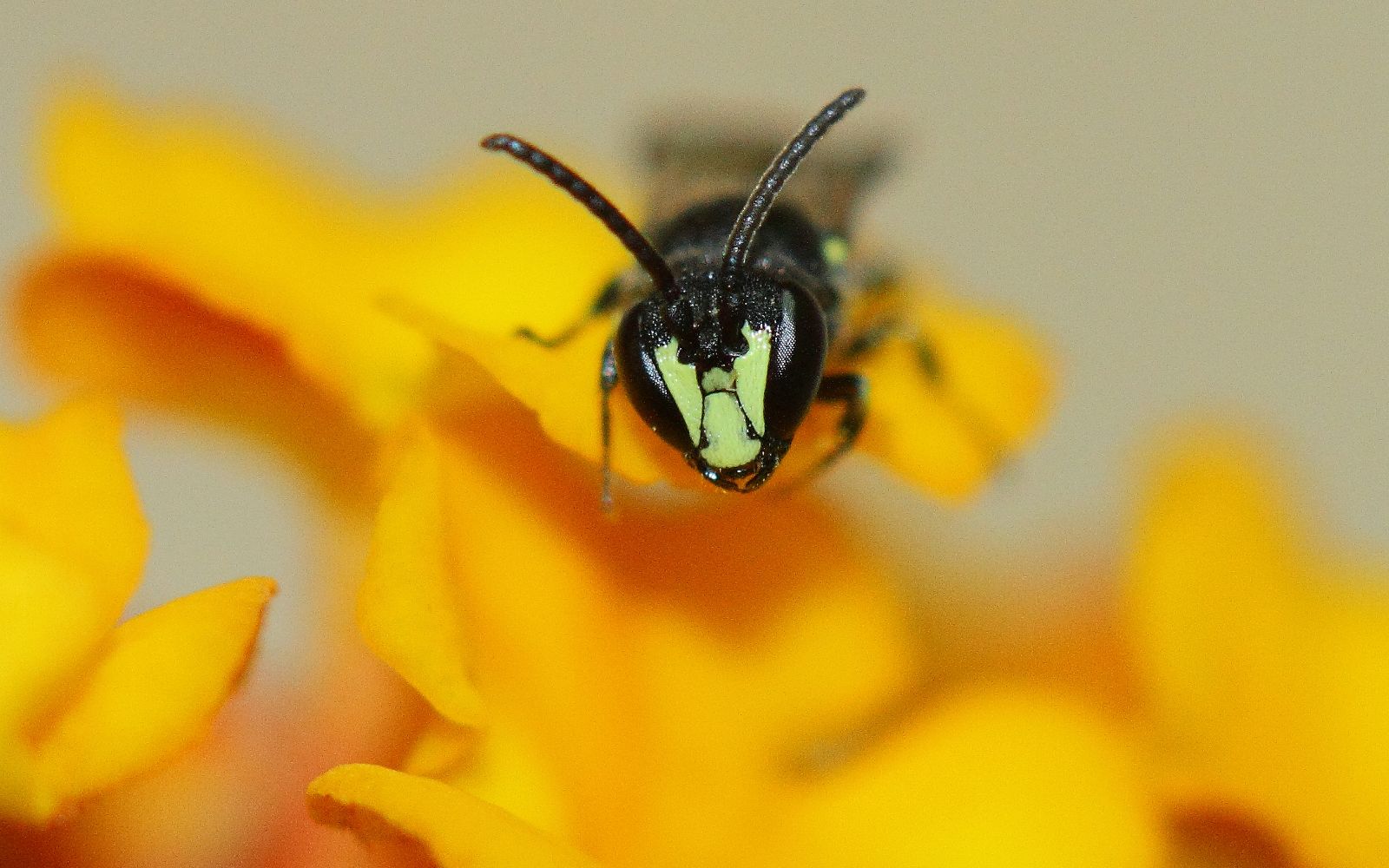Hylaeus communis – a bee in the garden

This white-faced bee, spotted in 2018 in the region of Manteigas (Serra da Estrela Natural Park) and this year in the Municipal Garden of Miraflores (Oeiras), was found by Albano Soares during a Bioblitz visit to the Gulbenkian Garden.
White-faced bees (Hylaeus, 40 species cited for Portugal) are generally small or very small and in most cases use holes in dead wood to make their reproductive cells; these holes are usually made by beetles.

In central and northern Europe, this species in particular is constantly present in open woods and gardens. The lack of records on this and many other bee species, is not generally due to the rarity of the species but rather, a result of the lack of specialists in this field of study.

The presence of this bee in the Gulbenkian Garden is due to the types of ecosystem found here that are often habitats for this bee species, namely open woods with the presence of flowering plants, in this case the Lantana which seems to be this bee species’ favorite. The existence of dead wood is also a key factor for the presence of this species, as this is where they breed.